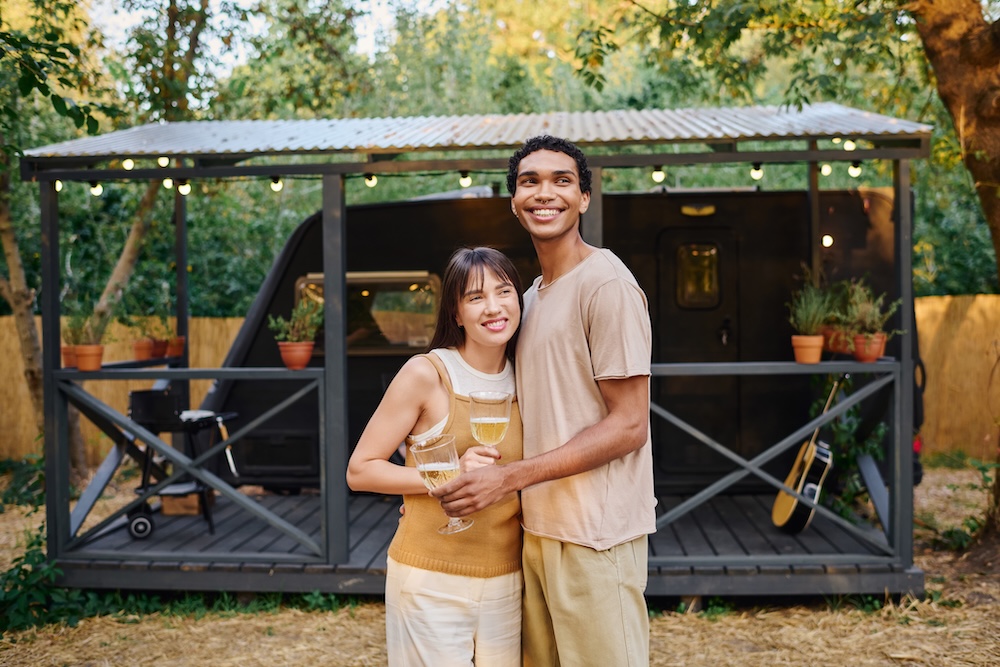For many, the idea of escaping to a quiet cabin deep in the mountains is the ultimate fantasy. No traffic, no screens, no noise—just nature, solitude, and the satisfaction of self-reliance. It’s a powerful vision, especially for those overwhelmed by modern life or just starting out and questioning the rat race.
But what’s the reality behind this romanticized dream? Is it really all peace and freedom—or is there more sweat, struggle, and sacrifice than meets the eye?
In this article, we explore what it’s really like to live off-grid in a cabin, unpacking the contrast between expectation and reality and offering practical insights for those considering this lifestyle.
1. The Dream: Why People Long for Off-Grid Cabin Life
At the heart of the cabin fantasy is a craving for simplicity and meaning. People envision a quiet life disconnected from social media, commuting, and consumerism. Instead, they dream of growing their own food, chopping wood, reading by the fire, and listening to the wind in the trees.
The appeal lies in trading screen time for real peace, digital connection for nature’s rhythms, and noise for stillness. This dream is especially potent for younger generations seeking more intentional living.
2. The Reality: What It’s Really Like to Live the Dream
While the dream is beautiful, the reality is often more demanding—and less forgiving—than expected.
- You can’t take time off: Livestock and gardens don’t wait for you to feel better. Daily chores are essential and unrelenting.
- Nature is relentless: Winter brings snow and heating needs; summer requires full-time gardening and fire prep. Every season has its demands.
- No sick days or paid vacations: Illness, injury, or fatigue don’t excuse you from feeding animals, maintaining power systems, or harvesting food.
Despite the challenges, many who’ve embraced this life describe it as deeply rewarding and transformational.
3. Skills You’ll Need (and Should Start Learning Now)
This life demands versatility. You can’t call a handyman every time something breaks.
- Gardening and food preservation
- Carpentry and DIY home repairs
- Water management and filtration
- Off-grid energy systems (solar, wind)
- Hunting, fishing, foraging, and animal care
Even starting in small ways—like learning to grow herbs or fix simple things—builds valuable confidence.
4. The Financial Side: It’s Not Cheap or Free
Living simply doesn’t mean living cheaply—at least not at first. You’ll need money for:
- Land (with access, water rights, and decent soil)
- A cabin or materials to build one
- Tools, batteries, solar panels, and backup systems
- Livestock, seeds, fencing, and storage
Saving, avoiding debt, and budgeting for both startup and maintenance costs are crucial.
5. The Myth of Total Isolation
Total isolation may sound appealing, but it’s rarely sustainable or wise. Even remote homes typically maintain some connection to services, neighbors, or community.
- Most successful off-grid lifestyles include bartering, group knowledge-sharing, and occasional social support.
- True isolation makes recovery from accidents, equipment failure, or burnout much harder.
A balanced approach—independence supported by selective community—is often the key.
6. Starting Small: Stories of Progress, Not Perfection
You don’t need 100 acres and a log cabin on day one. Many start with a fixer-upper, a backyard garden, or a weekend homestead.
Small steps like learning home repair, building raised beds, or installing rain barrels lay the groundwork for a bigger dream.
The takeaway? Start now, start small, and keep building.
7. Modern Off-Grid Living: Technology Helps
Forget the myth that off-grid means primitive. Many off-grid homes enjoy modern comforts—thanks to smart planning and renewable energy.
- Solar panels, wind turbines, and battery banks
- Composting toilets and greywater systems
- Satellite internet and solar Wi-Fi
- Tiny homes with insulation, HVAC, and energy monitoring
Planning ahead lets you choose which comforts to include—and which challenges to accept.
8. The Joys They Don’t Tell You About
Despite the hardships, many describe this life as incredibly rewarding.
- Deep peace and connection to nature
- Pride in building and growing with your own hands
- A sense of agency and self-trust
The physical effort becomes meaningful when paired with purpose and freedom.
9. Is This Life for You? How to Decide
Not everyone thrives in solitude or rugged conditions. Ask yourself:
- Can you delay gratification for long-term goals?
- Are you comfortable with discomfort and uncertainty?
- Can you build, fix, grow, or learn to?
- Do you need daily social interaction—or just meaningful connection sometimes?
Off-grid life is not an escape from hard work—it’s a commitment to a different kind of work.
Final Thoughts
The cabin-in-the-woods dream is powerful because it speaks to something deep in us: a longing for peace, purpose, and reconnection.
But dreams don’t just happen—they’re built. Brick by brick, skill by skill, choice by choice. Whether you’re just beginning to explore this idea or actively preparing, start learning, saving, and experimenting now.
It may not be easy, but for many, it’s absolutely worth it.
FAQs
How much money do you need to start living off-grid?
It varies widely, but plan for $50,000–$150,000+ for land, cabin, tools, and infrastructure. Starting small reduces initial costs.
What are the best beginner skills to develop now?
Gardening, carpentry, water management, cooking from scratch, first aid, and solar basics are essential.
Can you do this solo, or is it better with a partner/community?
Solo is possible but harder. Most recommend some form of support system.
What’s the best climate or region to start?
That depends on your goals. Milder climates reduce heating needs, but many thrive in cold areas with proper planning. Look for water access, good soil, and reasonable regulations.









Reader Interactions